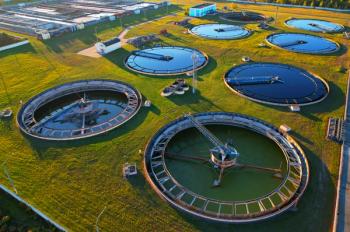
- LCGC North America-07-01-2014
- Volume 32
- Issue 7
Electrophoretic and Microfluidic Separation Approaches for DNA Analysis
Kevin Dorfman discusses his work to improve electrophoresis and nanochannel technologies to obtain genomic information.
DNA can be analyzed by many techniques, including electrophoretic techniques such as gel, capillary, and microchip electrophoresis, and nanochannel methods in which DNA is labeled and stretched. This interview with Kevin Dorfman, an Associate Professor in the Department of Chemical Engineering and Materials Science at the University of Minnesota in Minneapolis, Minnesota, discusses his research with DNA analysis and microfluidic and nanofluidic technologies.
A recent extensive review paper of yours (1) covers the various techniques for obtaining sequence information directly from unamplified genomic-length DNA, including gel, capillary, and microchip electrophoresis; microfluidic separation methods; DNA stretching techniques; and fluorescence burst analysis. Which of these techniques are employed in your laboratory, and what types of information do they provide?
Dorfman: We work on both the electrophoresis and the nanochannel methods, using a combination of experiments and simulations. Since I was a postdoc, I have been interested in the microfluidic separation methods for long DNA. This was the major focus of my research group through around 2012. Since that time, my research interests have shifted more toward stretching in nanochannels while we finish up some remaining projects in electrophoresis. In both cases, we are trying to improve technologies for obtaining genomic information at large scales — that is, at the level of genes rather than individual bases. In addition to providing genomic information, these are fantastic systems to explore the fundamentals of polymer physics and transport phenomena in well-controlled environments. I have not worked in the fluorescence burst analysis area. One of the reasons that I wanted to write this review paper was to have the opportunity to sit down and read that body of literature very carefully. The Los Alamos group did some amazing things with fluorescence burst analysis that I did not really appreciate until I got into the details.
How complementary is this information?
Dorfman: In the electrophoretic method, which is older, the DNA is cut by restriction enzymes that recognize particular sequences. When these fragments are separated by size, you can figure out the genomic distance between each of the cutting sites. In the nanochannel method, the DNA is labeled with sequence specific probes and stretched. The location of the probes is read optically. In both cases you obtain a "fingerprint" of the DNA by either looking at the pattern of the separated DNA (for electrophoresis) or the location of the probes (for the nanochannels). The resolution of the methods is lower than DNA sequencing, on the order of a kilobase, but the ability to work with large, unamplified DNA is an advantage.
What are the relative advantages of each of these techniques?
Dorfman: The electrophoretic methods are standard, and it is possible to get good results using pulsed-field gel electrophoresis in any biology laboratory. However, pulsed-field gel electrophoresis is limited by the challenge of reassembling the fragments into their genomic order, the amount of DNA you need to get a good signal, and the time required for the separation. The work done by my group and others, most notably the Baba group in Japan (2,3) and the Viovy group in France (4,5), has reduced the separation time from many hours to minutes or even seconds by using microdevices. Since microdevices are small and use sensitive detection methods, they have improved the sample consumption problem. However, electrophoretic methods are always going to be limited by the need to cut the DNA first, separate it by size, and then figure out how those sizes were generated from the original genome. This last problem is solved by the various stretching methods such as nanochannel confinement; the DNA is not cut so you can see the order of each of the probes as well as the distance between them. Needless to say, working with single molecules of DNA in nanochannels is the ultimate limit in reducing the sample size.
References
(1) K.D. Dorfman, S.B. King, D.W. Olson, J.D.P. Thomas, and D.R. Tree, Chemical Reviews 113, 2584–2667 (2013).
(2) N. Kaji et al., Anal. Chem. 76(1), 15–22 (2004).
(3) T. Yasui et al., Microfluidics and Nanofluidics 14(6), 961–967 (2013).
(4) P. Doyle et al., Science 295(5563), 2237 (2002).
(5) N. Minc et al., Anal. Chem. 76(13), 3770–3776 (2004).
This interview has been edited for length and clarity. To read the full interview please visit
Articles in this issue
over 11 years ago
Method Translation in GC and GC–MSover 11 years ago
Professor Barry L. Karger: Scientist, Mentor, and Innovatorover 11 years ago
Mobile-Phase Degassing: What, Why, and Howover 11 years ago
HPLC 2014 Highlightsover 11 years ago
Gas Cylinder Setup and Useover 11 years ago
Vol 32 No 7 LCGC North America July 2014 Regular Issue PDFNewsletter
Join the global community of analytical scientists who trust LCGC for insights on the latest techniques, trends, and expert solutions in chromatography.





